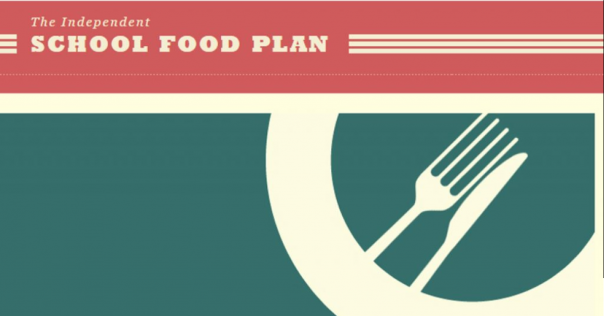
Ten years ago, the Government published John Vincent and Henry Dimbleby’s School Food Plan. Welcomed by all political parties, the Guardian journalist Patrick Butler said, ‘The School Food Plan is that rare thing in the age of cuts and austerity: a passionate, unequivocal defence of universal public service provision’.
School Food Plan lays out 16 actions
With a clear plan laying out 16 actions (and one recommendation for universal free school meals, more on that shortly), the Plan was written to help school leaders improve what children eat and how they learn about food.
Everyone, from Jamie Oliver to Michael Gove, from Ofsted to headteacher unions, from headteachers to school cooks, hailed and coalesced around the Plan’s vision for ‘flavourful, fresh food served by friendly, fulfilled cooks in financially sound school kitchens’.
There was a real feeling of shared commitment and opportunity, with everyone championing the three crucial principles in the plan: putting children at the centre, recognising the vital role of headteachers, and the importance of taking ‘a whole school approach’.
With the Coalition Government announcing universal infant free school meals (UIFSM) just a few weeks afterwards in September 2013, a real school food revolution was underway. New school food standards made it easier and more flexible for cooks and caterers.
Schools were offered direct help, funding, training and a new food curriculum, with specific help for small schools. Catering workforce standards and a national breakfast programme were produced, and a role for Ofsted created.
Ten years on
We have so much to celebrate. Millions more children can now eat a free school meal. The recent Jamie Oliver Good School Food Awards and the school catering industry’s own Awards of Excellence shine a light on the herculean and heroic efforts from schools and caterers to provide great school food. The School Plan Alliance, made up of the original School Food Plan’s Expert Panel organisations, still meets regularly with the Department for Education.
But it’s also clear the School Food Plan’s vision is still some way off. Far too many children can’t access healthy, nutritious and affordable school food. Why? What’s happened? Here are my four pointers of where we might have gone wrong.
Lack of positivity and consensus
The core message of the School Food Plan was children’s health and happiness. It was about being able to learn well and thrive. The simplicity and power of the message (together with some incredible advocacy and persuasion from Henry and John, of course) ensured that everyone came together to share a vision. The Plan laid out a clear blueprint, and it had the commitment from those who could change the policy and provide the funding. Crucially, school food wasn’t used as a political football, as it is today.
We don’t measure or monitor school food effectively
A key tenet in the School Food Plan was ‘what gets measured gets done’ – Government committed to measure and publish progress – on school meal take-up, on quality assurance marks, on Ofsted reports and on the number of children leaving school able to cook. This is where Government have, frankly, let children down.
Ten years on we have little robust information on the state of school food. We don’t know how many children eat a school meal every day (apart from figures from the school census which are widely recognised as being inflated), and we don’t know the quality of those meals.
Yes, there are many schools doing brilliant things but there are just as many who struggle with both take-up and quality. These schools need to be identified so we can offer them help and support. Transparency and accountability is important and it’s missing.
We’re missing the whole school approach
The School Food Plan focused on embedding a ‘whole school approach to food’. Many of the actions were focused on supporting schools to incorporate food culture in both the formal and informal curriculum, to instil a love of food and cooking.
This is not easy to do, and with so many other demands on schools (from timetabling, through to progress / standards reporting), food and the lunchtime experience has become transactional, rather than a place where children come together to eat. A family dining style is often lauded by our politicians but the reality for schools is often different.
Pupils and schools need to be supported and empowered to be able to do food well. More children will eat and benefit as a result. Just because a meal is free, doesn’t mean it is wanted or will get eaten.
The virtuous economics of school food
The School Food Plan compared the 43% national take-up (take-up rates were measured back in 2013 when the School Food Trust was still around) to “a half-empty restaurant”. The whole point was increasing take-up drives efficiency in the system and raises standards.
The introduction of UIFSM did that at a stroke – and best estimates are that around 70% of our primary school children eat a meal every day. But secondary schools still languish behind. But an important factor is now at play – one of affordability – both real and perceived.
School food funding is bizarrely complicated. Schools can receive up to eight different funding lines on school food (and even these are further discombobulated, with some funding coming from ‘real pots’ of money and some from ‘notional pots’). Funding allocations have also not kept up pace with inflation. So, in real terms, there is less money per pupil per meal.
Conclusion
Whilst great progress has been made, we need to heed these lessons on why the School Food Plan hasn’t been able to realise its vision. We need to continue to fight for fairer funding, equitable access, and quality assurance for school food. It’s needed now more than ever.